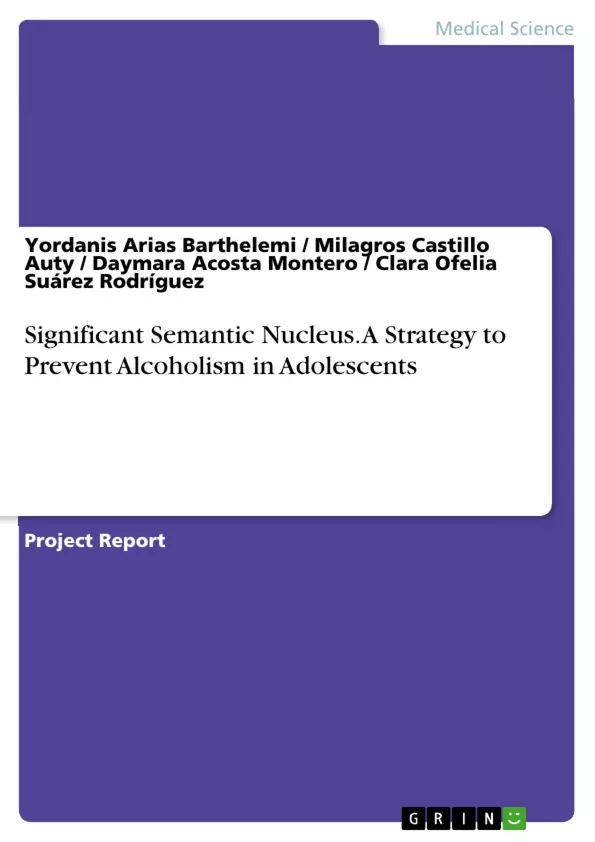This report is the result of praxis, and its general objective is to present to the scientific community a proposal for psychosocial intervention to prevent alcoholism in adolescents. To demonstrate this expertise, the contributions of Jean-Claude Abric and Armando Alonso were epistemologically integrated; the tool used was the Natural Semantic Networks psychological test. It is necessary to clarify that this procedure was validated by expert criteria. In addition the effectiveness of the praxis was confirmed thanks to the interviews with the parents of the adolescents after the psychosocial intervention. This expertise can be applied to adolescents to prevent other scourges of humanity such as: prostitution, violence, human trafficking, slavery, terrorism and organ trafficking, where it would be based on the singularities of each country or community.
Inhaltsverzeichnis (Table of Contents)
- Introduction
- Description of the psychosocial intervention applied to adolescents
- Psychosocial intervention itself
Zielsetzung und Themenschwerpunkte (Objectives and Key Themes)
This report aims to present a proposal for psychosocial intervention to prevent alcoholism in adolescents to the scientific community. It draws upon the contributions of Jean-Claude Abric and Armando Alonso, using the Natural Semantic Networks psychological test. The report focuses on integrating theoretical frameworks with practical interventions to address the issue of adolescent alcoholism.
- Prevention of Alcoholism in Adolescents
- Social Representations and Alcohol Consumption
- Psychosocial Intervention Strategies
- The Natural Semantic Networks Psychological Test
- The Role of Language in Resignifying Social Representations
Zusammenfassung der Kapitel (Chapter Summaries)
- Introduction: This chapter establishes the significance of alcoholism as a societal issue and highlights the importance of early intervention during adolescence. It introduces the concept of social representations and how they influence adolescent behavior, emphasizing the need for interventions that promote positive representations about alcohol consumption. The chapter also provides background information on the study conducted, including the psychosocial diagnosis of excessive alcohol consumption among adolescents.
- Description of the psychosocial intervention applied to adolescents: This chapter details the intervention process, including the informed consent obtained from parents or guardians. It explains the methodology used to identify and select adolescents for the intervention, highlighting the importance of group participation and the role of the coordinator of the health professionals team in establishing a positive and collaborative environment.
- Psychosocial intervention itself: This chapter describes the specific steps taken during the psychosocial intervention. It focuses on the use of the "Martian" technique, a creative approach designed to engage adolescents and facilitate open communication about their experiences with alcohol consumption. The chapter provides examples of the activities conducted during the intervention and highlights the process of word association and the creation of a "Significant Semantic Nucleus" as a tool for promoting positive social representations.
Schlüsselwörter (Keywords)
This report focuses on the prevention of alcoholism in adolescents, utilizing the theory of social representations and the Natural Semantic Networks psychological test. The intervention strategy aims to promote positive social representations regarding alcohol consumption through language-based techniques and the development of a "Significant Semantic Nucleus."
- Citation du texte
- Yordanis Arias Barthelemi (Auteur), Milagros Castillo Auty (Auteur), Daymara Acosta Montero (Auteur), Clara Ofelia Suárez Rodríguez (Auteur), 2024, Significant Semantic Nucleus. A Strategy to Prevent Alcoholism in Adolescents, Munich, GRIN Verlag, https://www.grin.com/document/1440887



